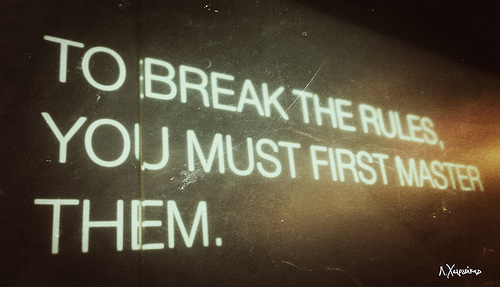 Photo by http://heretakis.com [CC]
Photo by http://heretakis.com [CC]
Designers love consistency. Part of the design process is setting down the rules to ensure consistency of the design outcome. Graphic and web designers use layout grids to contain the figures; architects use axes to landmarks, landscape features and compass points to define form, movement and flow; and industrial designers use anthropomorphic measures to constrain the placement of controls and indicators…
A good design has strong and clear rules for consistency that bring cohesiveness and structure to the work. A good designer makes good rules.
The mark of a true craftsperson designer, however, is knowing when to break the very same rules he or she has set up in the first place. This is the paradox of consistency in design.
Unfortunately, this can be very difficult for some clients to understand. This is especially true for clients who work in a fear-based culture (where every decision has to be clearly and anally justified), who subscribes to black-and-white thinking (where absolute consistency rules unthinkingly above all else), and who are unable to see the big picture (where they obsess over details at the expense of the sum of the whole which is invisible to them).
Trying to get such clients to see and work at the big picture level can be challenging. How do you encourage someone to see what they cannot see? This makes decision making very frustrating and challenging for all concern. The client spends huge amounts of time fiddling with the details, enforcing their own (sometimes conflicting) rules with draconian determination, and making the design stiffer and deader in the process.
I know a business who is so fixated on the vertical version of their logo that they refused to consider the official alternative horizontal version; which resulted in a far less visible/legible implementation of their brand! Talk about defeating the purpose.
When evaluating a design at the big picture level, I try and encourage the client to focus on the broad consistency of the underlying framework, and also on the message consistency. As a minimum, the design as a whole has to feel right, technically work, and say the right things. The remaining details are then left open enough for the designer to play, to break the rules, and thus bring life and pizzazz to the work.